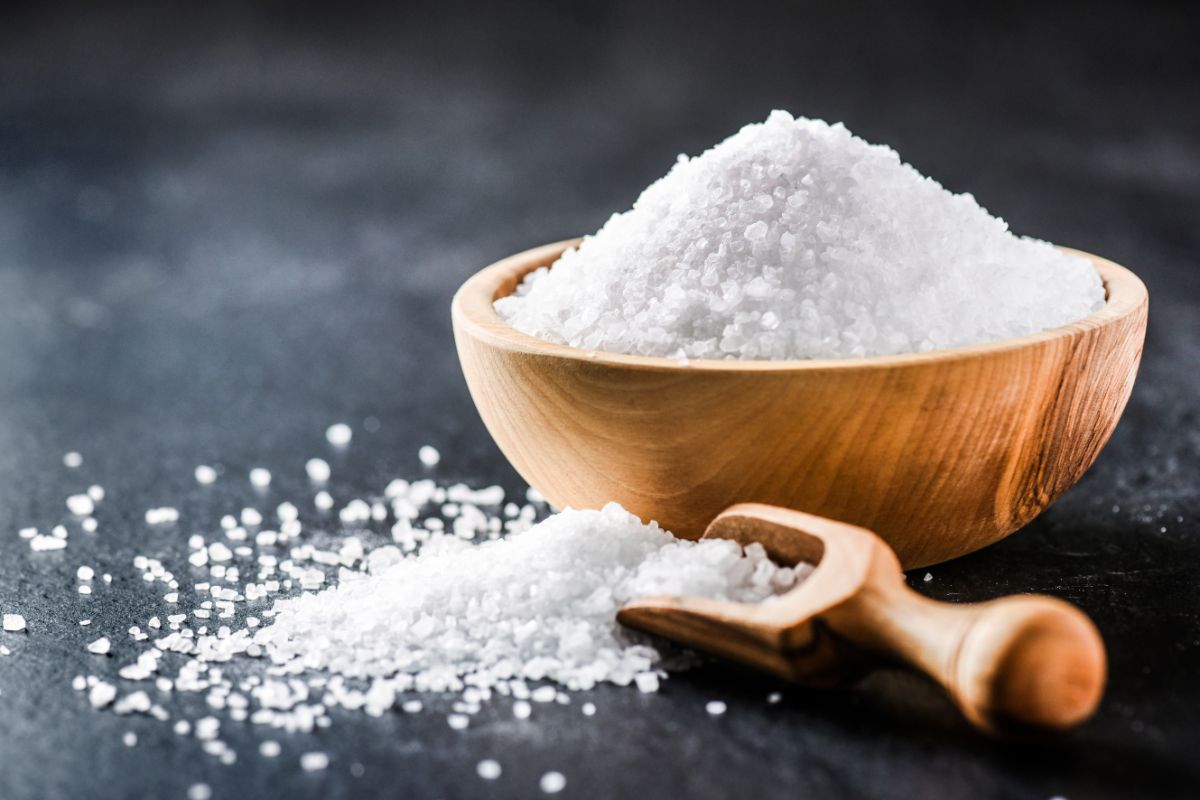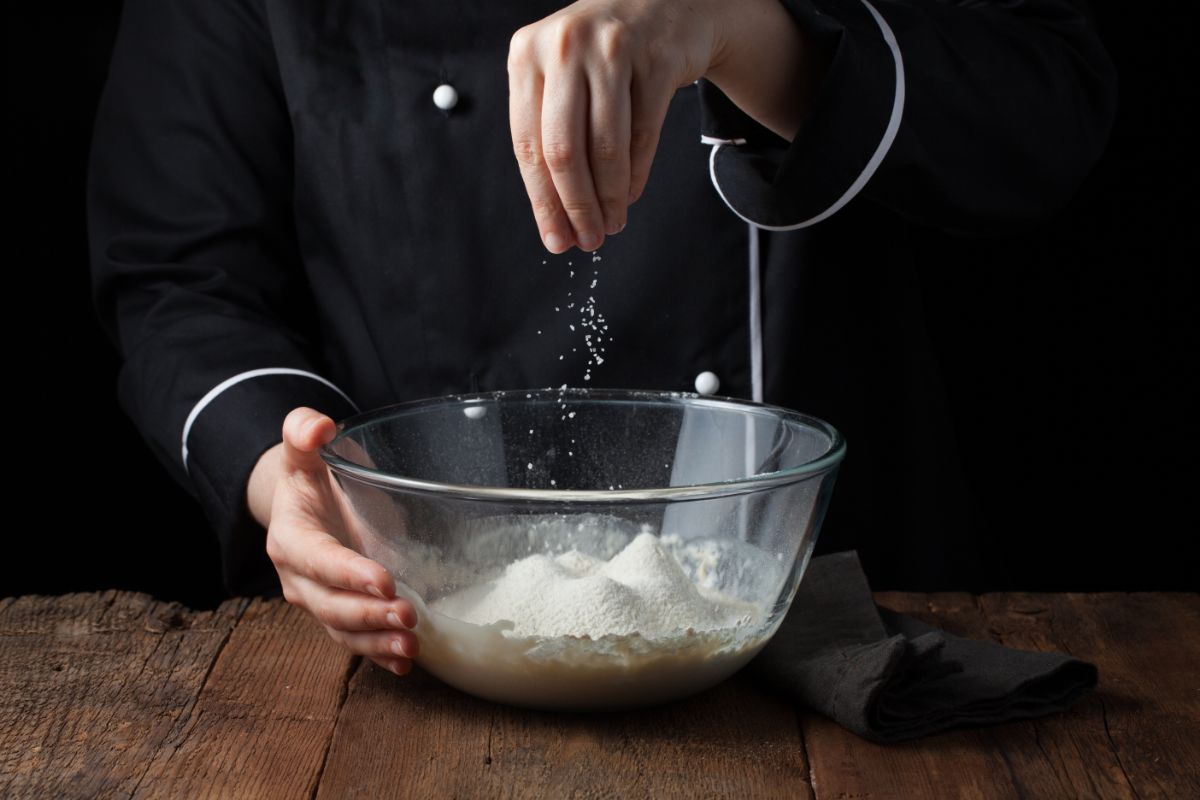Salt plays a big role in the baking process. It determines the flavor, texture, and quality of the baked product. However, you may find yourself at a crossroads when it comes to the appropriate time to salt your dough. And, of course, whether it has the potential of killing the yeast in your dough or not. Here is what you need to know about the effects of salt in a normal baking process.

So, does salt kill yeast in the dough? Salt kills yeast only in higher concentrations. It is hygroscopic in nature. Therefore, when it comes into direct contact with the yeast in your dough, it usually sucks the water molecules from the yeast cells. As a result, the cells undergo a process of osmotic stress, break down, and become dead.
Take a yeast cube and divide it into two halves. Place the halves into separate containers and add 1 tablespoon of salt to one of the containers. Keenly observe how the salt particles mix and react progressively with the yeast until it forms a watery substance.
Take the final product of the reaction and test it against the unreacted one. You will realize that the yeast in the first (reacted one) produces a dough that does not ferment or rise. Elsewise, the second half produces a dough that rises, proofs, and bakes well under normal baking conditions.
So should you not salt your dough?
Salts do not kill the yeast entirely. It only slows down the yeast’s growth rate and creates an ideal environment for rising and proofing. For an excellent baking process, the yeast activity must be regulated to allow for slow, steady, and uniform rises.
By depriving the yeast of some of its water content, salt in the dough efficiently regulates its activity to come up with excellent baked products.
Effects of over-salting
Other than resulting in salty products, there are some other side effects of over-salting. It inhibits the yeast action and, sometimes kills it. This process is progressive hence, the yeast will be retarded to a point where it is remarkably reduced in volume.
Secondly, over-salting results in a stronger gluten network. In this case, the dough will bake excellently but the final product becomes flat and chewy.
What to do with an over-salted dough
Over-salting by twice the amount in your recipe notably ruins the taste. Something more than three times the amount in your recipe should be tossed. However, when the enzyme’s activity is not notably inhibited, there is a better way of dealing with the mess.

You can add an extra amount of flour and some other basic ingredients such as water and sugar. When doing this, try to keep the ratios in your recipe.
Working with something bigger or larger than what you expected may be a bit demanding. Therefore, having added the extra ingredients, divide the mixture into portions that you can easily work with. Batches of the original size are recommendable.
Where you do not have enough ingredients, it does not hurt much to dump the mess. After all, doughs are not that expensive.
Effects of too little salt in a dough
Have you ever forgotten to add salt to your dough on one of these awkward baking days? Did you like the taste and shape of the product? If yes, then you know it all.
Too little salt or no salt results in a bland taste or no taste at all. It is the salt that brings out the taste of other ingredients in a fluffy baked good. With no salt, even the taste of the sugar won’t manifest.
Secondly, it is the salt that regulates the enzyme action in the yeast. With too little or no salt, the yeast will rise too quickly. The successive proofing processes take too short. Additionally, salt stabilizes the gluten structure. With too little salt, the dough will rise and flatten during either baking or cooling.
The best time to add salt
Two theories go around in baking. Some people believe in mixing everything, kneading, and adding salt at the last minute. Whereas, other people believe in mixing the flour, water, and yeast, sit the mixture for about 30 minutes and add salt before kneading. Here is what you need to know…!
Salt has the potential of inhibiting enzyme action. By adding it late, you will be giving the yeast enough time to work on the dough before the inhibition process begins. Without the salt, the gluten network grows faster but not stronger.
However, the worst happens when you will want to knead the dry salt particles in your already made dough. It is sweat-breaking to get the particles evenly distributed throughout the dough.
By mixing the ingredients and letting them stand (autolyse) for some time, you will be giving each of the time to achieve their best.
The gluten network promptly develops since the yeast action is at its peak. By the time you will be adding the dry salt, almost all the yeast particles shall have participated in gluten formation. As a result, a little is exposed to osmosis stress.
Secondly, by adding the salt just before kneading, you will find it easy to distribute the dry salt evenly throughout the dough.
With preferment, adding salt too early can lead to devastating effects. It leads to a more concentrated mixture that does not allow for effective yeast development. The only logical alternative is to add salt during the kneading process.
Conclusion
Salt is the cornerstone of a successful baking process. Without it, the product is a flat mess that can only be thrown away. With too much of it, the resultant product is a salty, chewy, and crumbly substance that can demoralize you into baking anymore.
Baking is all about learning. It takes longer to know the specific amount of salt to add to your dough since this varies depending on the type of product you are up to.
Elsewise, it also takes a good period to know when to salt your dough. This also varies depending on the baked good you want to make out of it. So long as you don’t kill your yeasts, there will always be no harm in trying.
